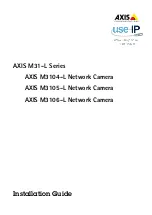
To remove the lens just grip the whole barrel firmly and give
it about three turns to the left (anti-clockwise). To attach a
lens simply screw it firmly into the cameras mount in a
clockwise direction; when it stops, give it a slight extra twist
to ensure that it is securely attached. Note -- when refitting
lenses with an auto-manual control, such as the standards
lens fitted on the Zenith TTL, make certain that the lens is set
to the 'A position before taking further photographs. This
ensures that you will be able to frame and focus easily.
o
Thread mount lenses, particularly those of different manufacture
to the camera, may sometimes fit with the aperture and distance
scales slightly to the right or left of the center position. This
does not indicate any defect in your camera or lens and in no
way affects the camera/lens operation.
o
Take care not to expose your cameras interior to dust, dirt or
moisture when the lens has been removed. Always replace the
lens in the body as soon as possible (or use a body cap
obtainable from your dealer). When removing or storing lenses,
protect them from accidental damage by placing them face
down and if possible, attaching a rear lens cap (again obtainable
from your dealer but usually included with accessory lenses).
This latter point is particularly important with lenses having an
automatic aperture mechanism since you should always avoid
putting undue pressure on the metal control pin at the rear.
o
Only standard Automatic Lenses with a single pin operating the
aperture mechanism can be used with the Zenith TTL. Lenses
designed specifically for use with more advanced methods of
electrically or mechanically coupled automatic systems, which
have extra keying levers on the mounting flange, should not be
used (see illustration).
o
All modern high-quality lenses such as that fitted to your Zenith camera are made from special
grades of optical glass. During the manufacturing process small bubbles almost inevitably occur
within the glass, but these have no adverse effect whatsoever on the functioning of the composite
photographic lens.
Caring for your camera and accessories
Your Zenith is a ruggedly-built camera designed to provide many years of dependable performance. If
you want the longest service and best performance, always treat your camera and accessories as you
would any precision instrument -- with care and respect!
o
First and foremost keep them clean! Your camera should be kept in its carrying case whenever
possible. The case is designed to permit all operating functions, except loading/unloading, to be
performed while the camera is inside. It will help protect your camera and lens from dust, dirt,
moisture and light knocks against hard surfaces-- the natural enemies of all cameras.










































